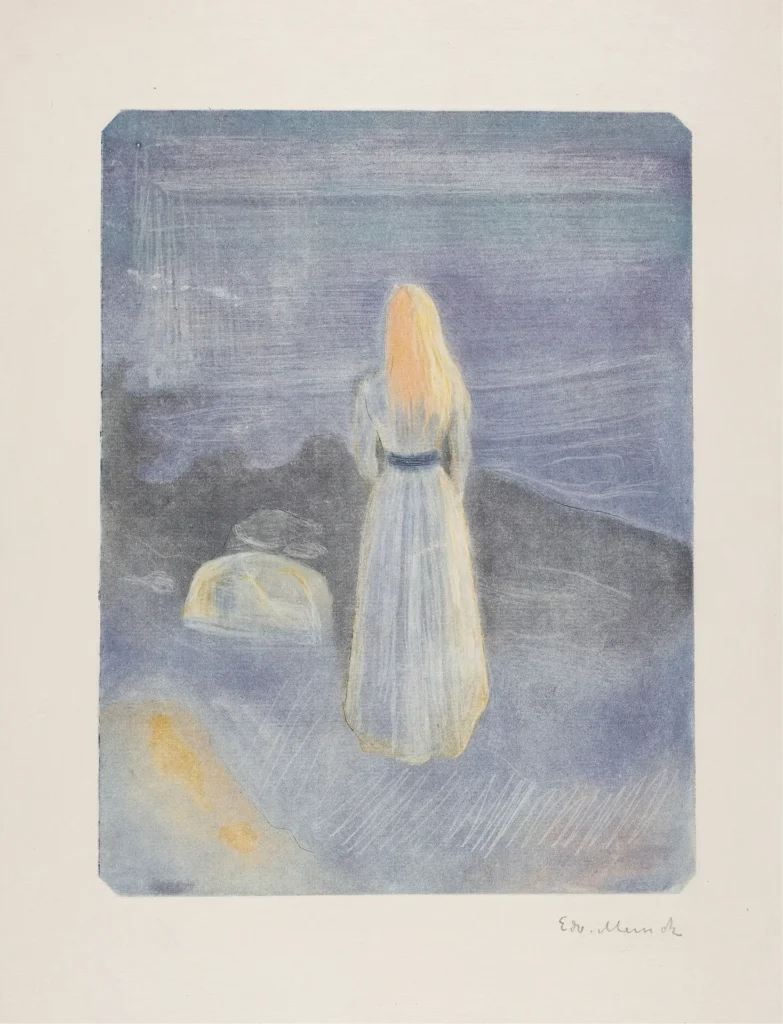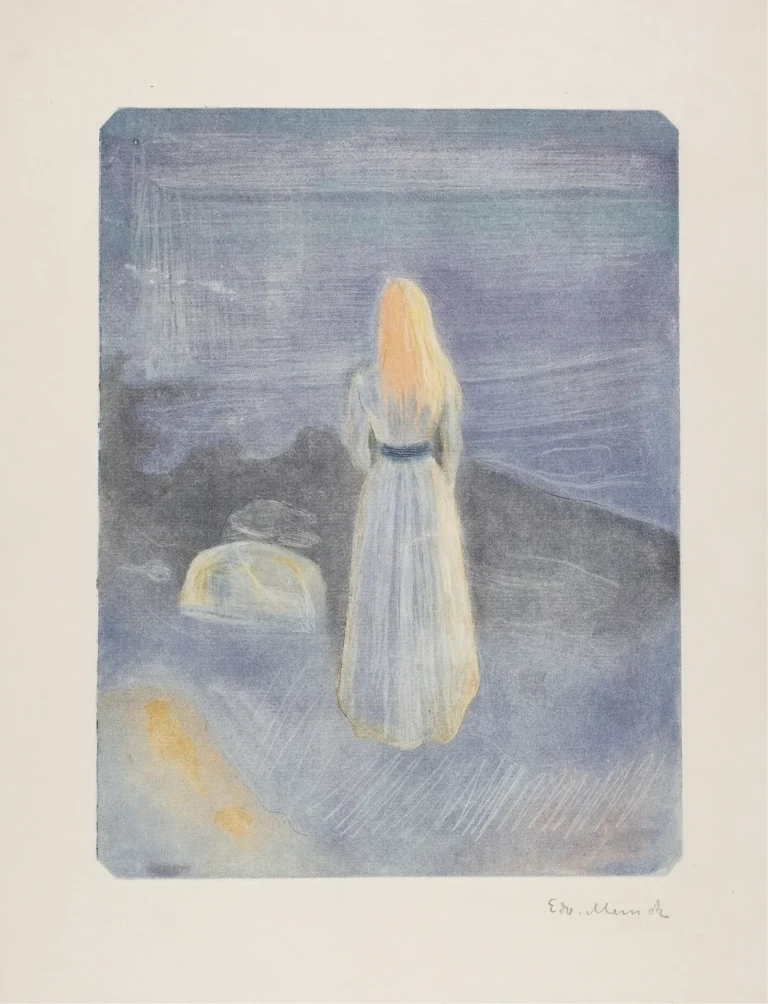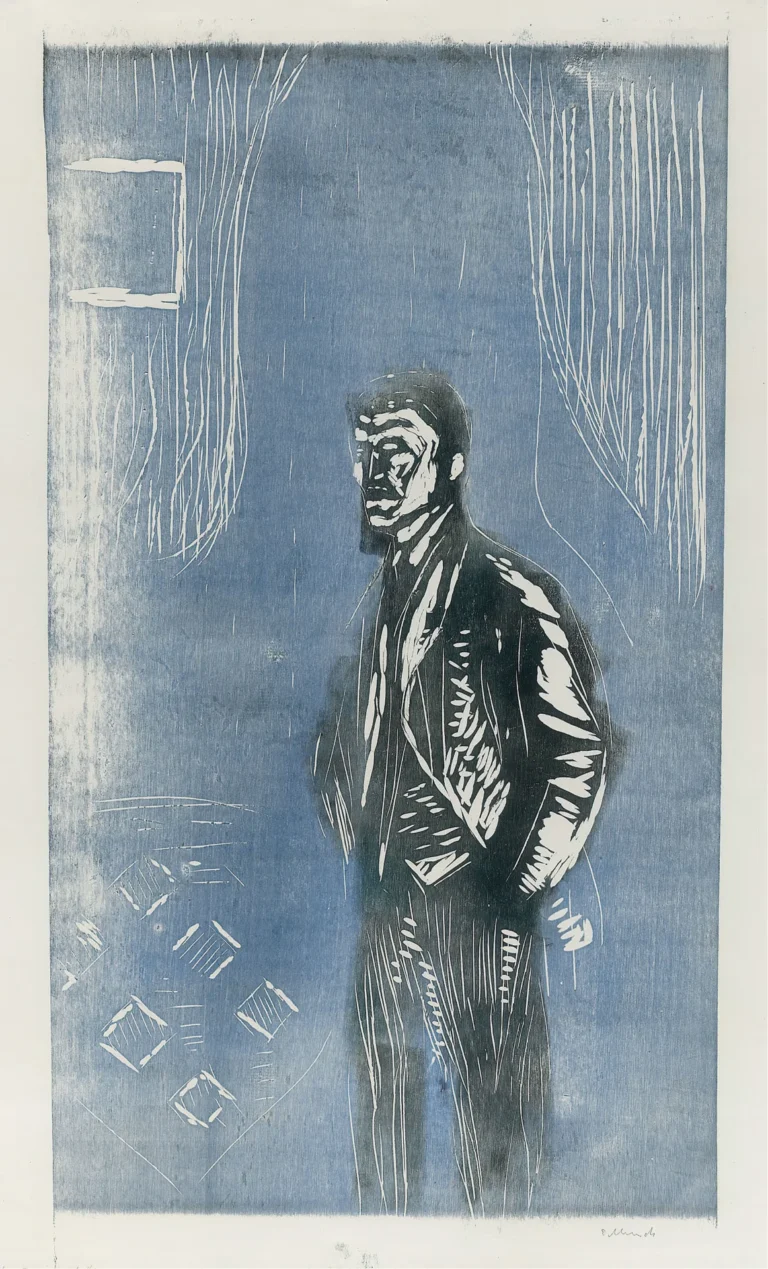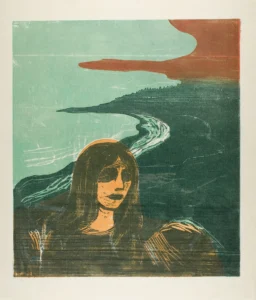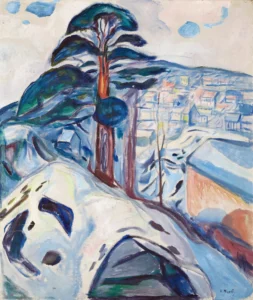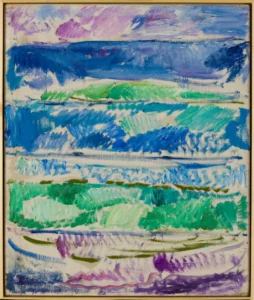Young Woman on the Beach (1896)
Young Woman on the Beach captures a solitary female figure lost in thought while gazing at the ocean. The piece exemplifies Munch's mastery of printmaking, showcasing delicate nuances through color variations and technique. Munch, known for depicting loneliness and existential themes, explores the fragility of the human condition, making this artwork a poignant reflection of the artist's inner world.
Year 1896
About the Artwork
Edvard Munch's Young Woman on the Beach serves as a poignant exploration of solitude, stemming from recurring themes in his earlier works, particularly influenced by the lost piece 'The Lonely Ones.' In this artwork, the woman stands with her back to the viewer, emphasizing her introspection as she gazes out to the ill-defined horizon. The composition highlights her fragility amid the expansive setting, amplifying feelings of isolation. The print's unique burnished aquatint technique enhances its emotional weight, marking a moment both timeless and ethereal. This method, applied during Munch’s intense printmaking period in Paris, contributed to crafting one of his rarest works, showcasing his innovative approach that melds technique with profound thematic exploration.
Did You Know
Liked what you see? Add it to your collection.
Enjoyed reading? Share it.
... continued
Origin and Inspiration
The figure of a solitary woman on a shoreline was first used by Munch in a painting from 1891-92 titled "The Lonely Ones," which has since been lost. However, the theme was revisited multiple times in his career, with Young Woman on the Beach being a notable example.
Composition and Interpretation
In Young Woman on the Beach. the focus is solely on the female figure, unlike in "The Lonely Ones" where a man is also present. The woman is depicted with her back turned, lost in a reverie as she looks out to sea. Her white dress shimmers in the wan light, and her hair gently waves in the evening breeze. The absence of a visible horizon emphasizes the vastness of the natural world and heightens the sense of her fragility and the precariousness of life.
Technique
The print was made in Paris during an intensive period of printmaking for Munch. It is a burnished aquatint, created using zinc plates pre-prepared with aquatint and delicately modulated highlights scraped into the aquatint with a burnisher. This technique is similar to mezzotint and resulted in one of Munch's rarest and most sought-after graphics. After 1897, Munch never worked in this medium again.
Color Variants
There are eleven known impressions of Young Woman on the Beach. each inked by hand à la poupée in different shades and colors. These variations produce subtle shifts in meaning, ranging from a more euphoric depiction with the girl bathed in the light of the setting sun to more somber moods where the figure appears fleeting and temporal against the deepening twilight.
Medium and Dimensions
The artwork is a burnished aquatint and drypoint in colors such as purple, blue, gray, and yellow, on cream laid Arches paper. The dimensions of the image/plate are 28.7 × 21.8 cm (11 5/16 × 8 5/8 in.), with the sheet measuring 44.5 × 31 cm (17 9/16 × 12 1/4 in.)
Current Status
The artwork is part of several collections, including the Art Institute of Chicago, where it is currently off view.




